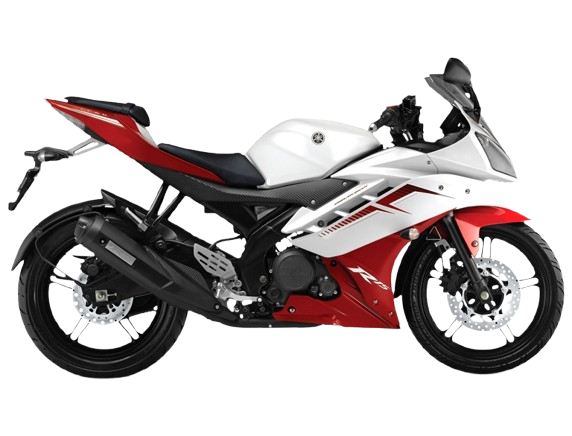Millions of two-wheelers exist in India, which are an integral part of the transportation system in the country. The rising number of vehicles on roads calls for the importance of following traffic rules by two-wheeler riders for safety and to avoid penalties. The article gives the latest traffic rules for two-wheelers in India, guiding readers on how to ride responsibly and safely.

Millions of two-wheelers exist in India, which are an integral part of the transportation system in the country. The rising number of vehicles on roads calls for the importance of following traffic rules by two-wheeler riders for safety and to avoid penalties. The article gives the latest traffic rules for two-wheelers in India, guiding readers on how to ride responsibly and safely.
Importance of Following Two-Wheeler Traffic Rules
Two-wheelers are most prone to road accidents compared to other vehicles.
Obeying traffic rules not only ensures your safety but also contributes to smoother management of traffic.
Obeying traffic rules can even save lives and reduce monetary liabilities due to penalties or damages.
Important Two-Wheeler Traffic Rules in India
Here are a few important traffic rules that an Indian two-wheeler rider must follow:
Wearing a Helmet
Mandatory for Both Rider and Pillion
ISI-Certified Helmets
Penalty for Non-Compliance
Carrying a Valid Driving License
Penalties for the above
Vehicle Registration and Insurance
Two-Wheeler Insurance
Speed Limit Compliance
Speed Limit Rules
Penalties for Over-speeding
Not Driving under Influence of Liquor
Alcohol Limit
Fines for Drunk Driving
Following Traffic Lights
Red Light Jumping
Stop Line Rules
Ban on Mobile Phone Usage During Riding
Distraction-Free Riding
Punishment
Carrying Passengers
Fine for Overloading
Use of Indicators and Lights
Signaling
Headlights and Tail Lights
Proper Lane Discipline
Stick to Designated Lanes
Penalty for Lane Indiscipline
According to Indian traffic laws, wearing a helmet is compulsory for both the rider and the pillion passenger.
Only ISI-certified helmets are permitted. Using substandard helmets can lead to penalties.
Failure to wear a helmet can result in a fine of up to ₹1,000 and possible suspension of your driving license.
Mandatorily essential every two-wheeler must be held by a holder of a valid driving licence.
Riding without having the license can attract one ₹5,000 under its penal provisions.
Be sure that your motor cycle is registered and you take the RC with you while you ride.
Compulsory is third-party insurance. Riding without insurance will get a fine of ₹2,000 for the first time.
Obey the speed limit that has been assigned to your locality.
For over speeding, the fines will range from ₹1,000 to ₹2,000 depending on the gravity of the offense.
The allowed BAC limit is 0.03% or 30 mg per 100 ml of blood.
The violator may be fined up to ₹10,000 or may be imprisoned for 6 months for the first time.
Jumping over a red light is a very serious offense and can bring a fine of up to ₹5,000.
One must stop their vehicle at the stop line of traffic signals.
No one is allowed to use a mobile phone during riding.
Offenders can be fined ₹1,000 or suspension of driving license.
Two persons are permitted to ride with a two-wheeler. It includes the rider and only one pillion passenger.
Carrying more than one passenger can result in a fine of ₹1,000.
Always use indicators to signal your intent to turn or change lanes.
Ensure your vehicle’s lights are functional, especially during night rides.
Avoid weaving in and out of lanes or riding on footpaths.
Offenders are liable to be charged between ₹500 and ₹2,000 as fine.
New Two-Wheeler Traffic Rules Amendments
Recently, the government has undertaken several amendments to traffic regulations to improve road safety. Here are some of the latest updates:
The Motor Vehicles Act
Awareness Campaigns
2019, enforces stricter compliance by significantly increasing penalties for traffic violations.
The government is running awareness campaigns to make the riders aware of these changes.
Compulsory Use of Reflective Stickers
- Reflective stickers on helmets and two-wheelers are now compulsory to enhance visibility, especially at night.
- Two-wheelers made after 2022 will have to be equipped with safety features like ABS for bikes above 125cc.
Safety Tips for Two-Wheeler Riding
Maintenance
Be Visible
Stay Alert
Avoid Overloading
Practice Defensive Driving
Keep your vehicle in good condition by checking brakes, tires, and lights regularly.
Wear bright or reflective clothing and use headlights during low-visibility conditions.
Keep an eye on road conditions and anticipate the actions of other drivers.
Do not overload your two-wheeler with excessive luggage or passengers.
Maintain a safe distance from other vehicles and avoid aggressive maneuvers.
Penalties for Common Two-Wheeler Traffic Violations
| Offence | Fine |
| Riding without helmet | ₹1,000 |
| Overspeeding | ₹1,000–₹2,000 |
| Drunk driving | ₹10,000 or imprisonment |
| Using a mobile phone | ₹1,000 |
| Riding without insurance | ₹2,000 |
| Red light jumping | ₹5,000 |
How to Pay Traffic Fines Online
It has now become very simple to pay traffic fines under the Government of India. Follow the steps:
- You have to visit the Parivahan e-Challan website.
- Fill out your vehicle registration number and challan number.
- Use options like net banking, UPI, or credit/debit cards for making the payment.
Conclusion
Two-wheeler traffic is not only a legal responsibility but also a matter of moral duty to bring safety to you and everybody on the road. You, therefore, save yourself from heavy fines and your precious life while promoting better traffic discipline in India. Refer to Coverfox Two-Wheeler Insurance for further details related to two wheeler insurance and traffic rules.






